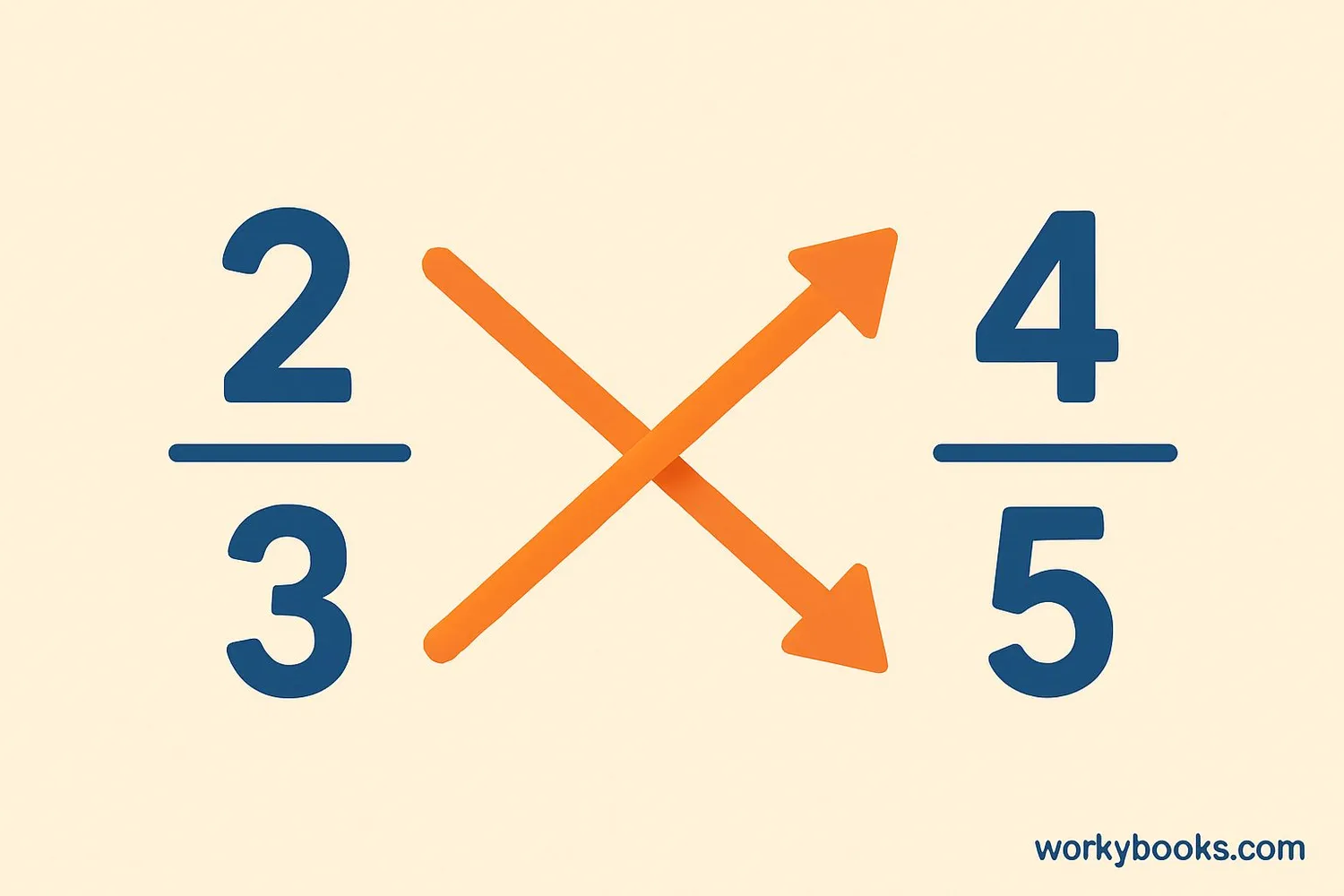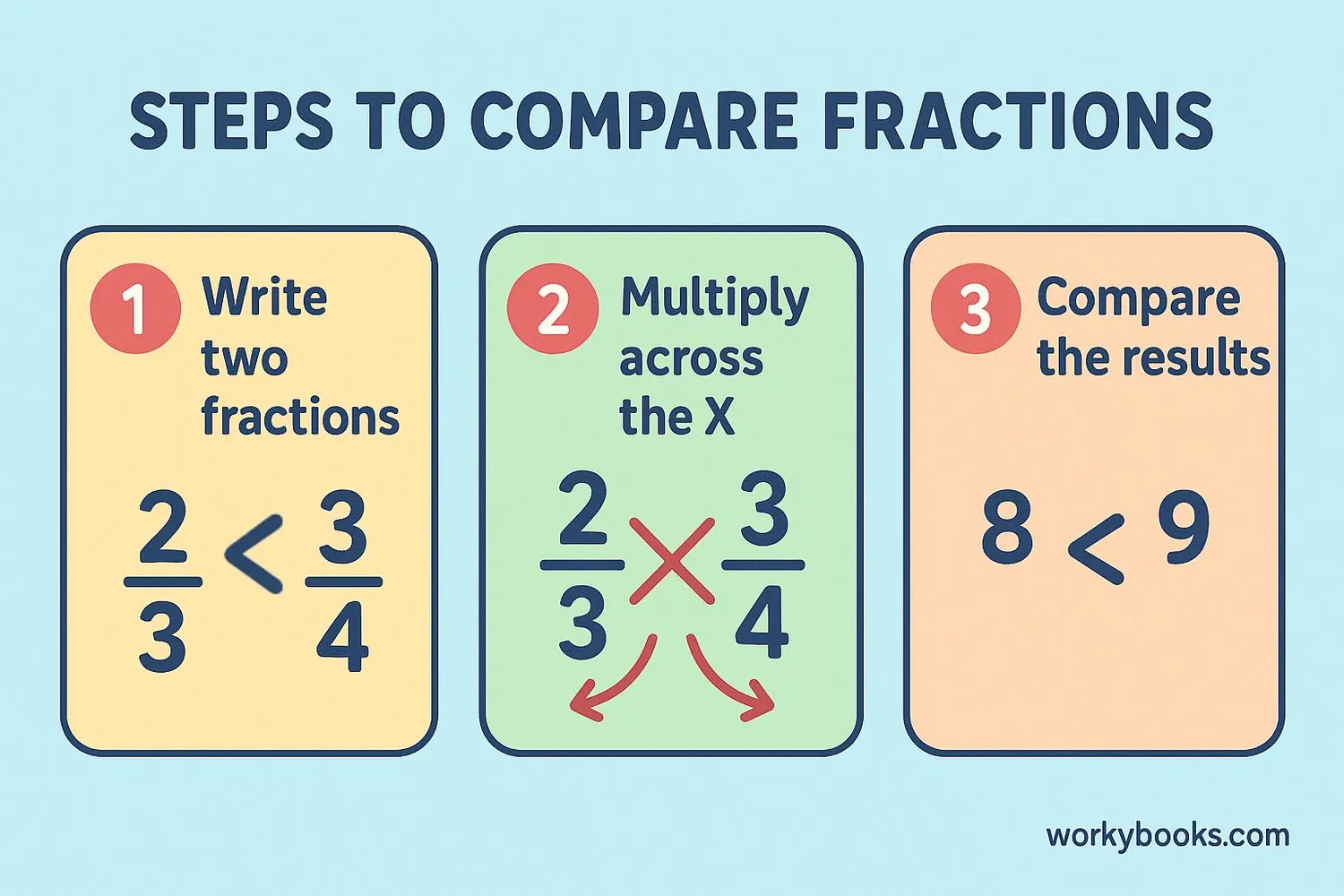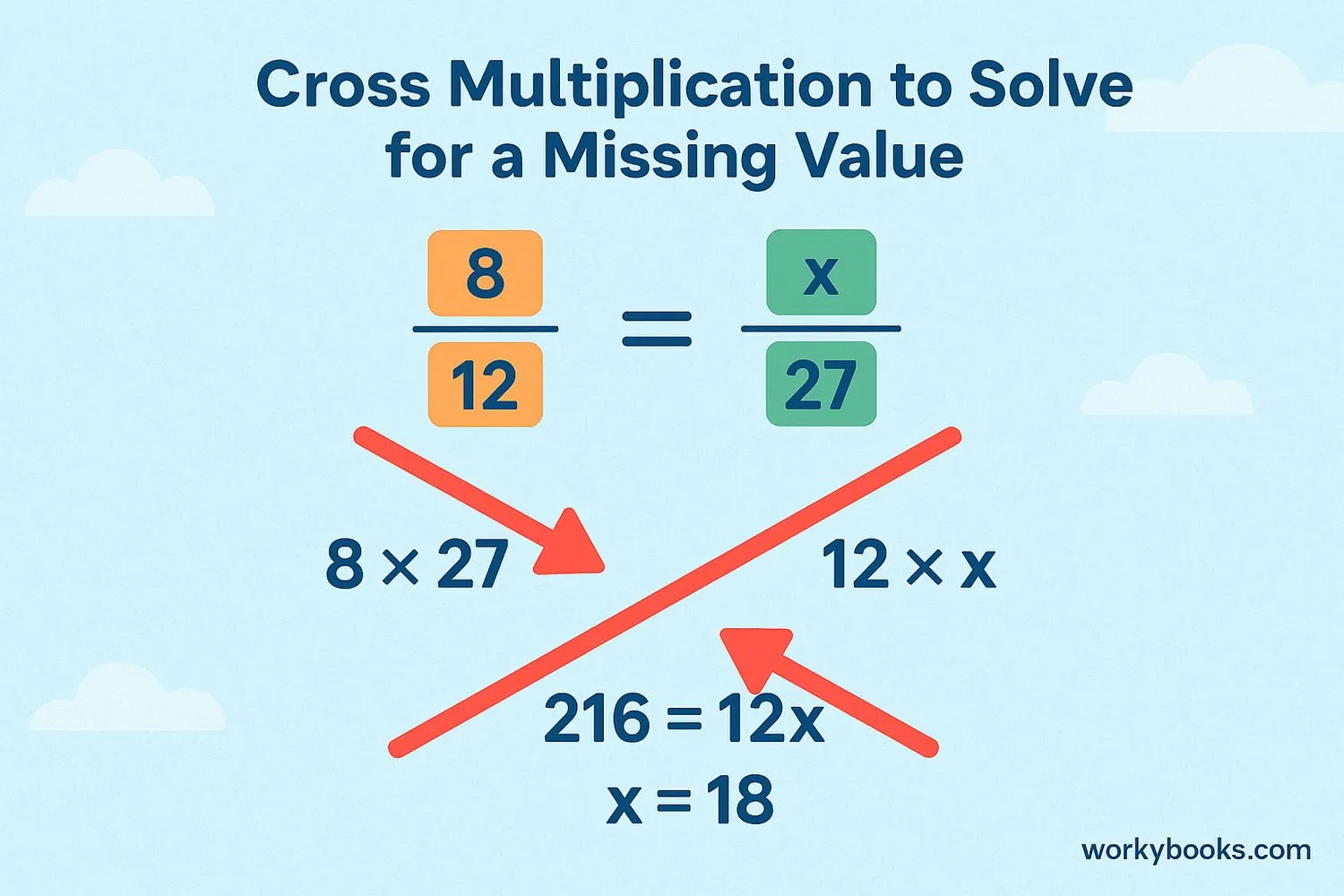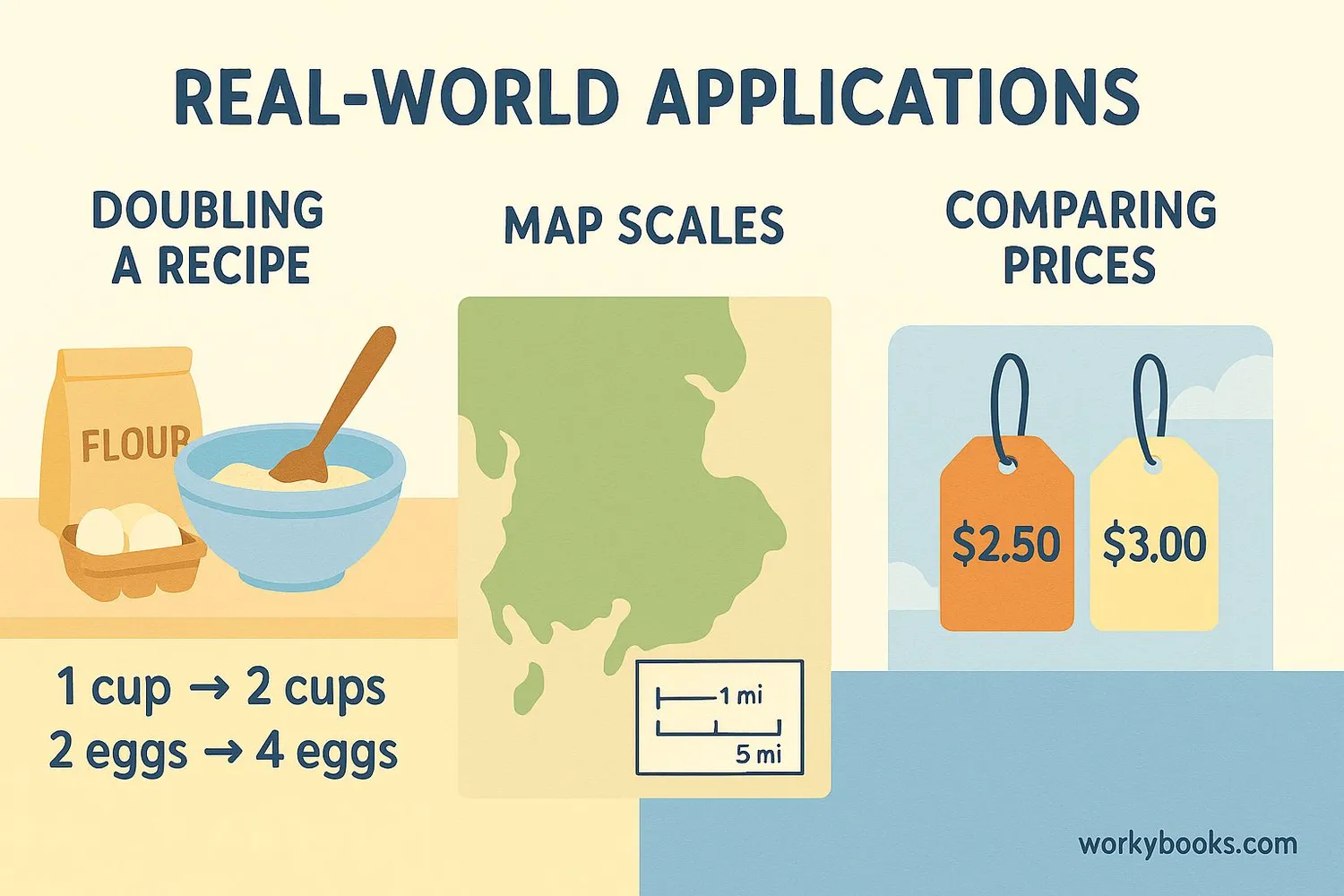Cross Multiplication - Definition, Examples, Quiz, FAQ, Trivia
Learn to compare fractions and solve proportions with this special math method
What is Cross Multiplication?

Cross multiplication is a special math method we use to compare fractions or solve proportions. It helps us find out if two fractions are equal, or which one is bigger.
Imagine two fractions side by side. We "cross" them by multiplying the numerator (top number) of the first fraction by the denominator (bottom number) of the second fraction, and then multiplying the numerator of the second fraction by the denominator of the first fraction.
This method is called "cross" multiplication because we make an X shape when we draw lines between the numbers we multiply!
Key Concept
Cross multiplication helps us compare fractions without making them have the same denominator.
How to Cross Multiply

Let's learn how to cross multiply with these simple steps:
Step-by-Step Guide
- Write the two fractions you want to compare, side by side
- Multiply the top of the first fraction by the bottom of the second fraction
- Multiply the top of the second fraction by the bottom of the first fraction
- Compare the two products you just calculated
Cross Multiplication Formula
Cross multiply: a × d and b × c
If a × d = b × c, then the fractions are equal!
Example: Are 2/3 and 4/6 equal?
Step 1: Cross multiply: 2 × 6 = 12 and 3 × 4 = 12
Step 2: Compare: 12 = 12
Step 3: Since they're equal, the fractions are equal!
Remember
Cross multiplication works because you're finding a common way to compare fractions without changing them.
Solving Proportions

Cross multiplication is especially useful for solving proportions. A proportion is when two fractions are equal to each other, but one number is missing.
Here's how we solve proportions using cross multiplication:
Solving Proportions Step-by-Step
- Set up the proportion: Write two fractions with an equals sign between them
- Cross multiply: Multiply the numerator of the first fraction by the denominator of the second fraction
- Multiply the other way: Multiply the denominator of the first fraction by the numerator of the second fraction
- Set them equal: Since the fractions are equal, these products are equal
- Solve for the unknown: Find the missing number that makes this equation true
Example: Solve for x: 3/4 = x/12
Step 1: Cross multiply: 3 × 12 = 36 and 4 × x = 4x
Step 2: Set equal: 4x = 36
Step 3: Solve: x = 36 ÷ 4 = 9
Step 4: Check: 3/4 = 9/12? Yes, both equal 0.75!
Pro Tip
Cross multiplication turns proportion problems into regular multiplication problems that are easier to solve!
Real-World Examples

Cross multiplication helps us solve everyday problems. Here are some examples:
Example 1: Baking Cookies
A recipe needs 2 cups of flour for 24 cookies. How much flour for 60 cookies?
Set up proportion: 2 cups / 24 cookies = x cups / 60 cookies
Cross multiply: 2 × 60 = 24 × x → 120 = 24x
Solve: x = 120 ÷ 24 = 5 cups
Example 2: Map Distance
1 inch on a map = 5 miles in real life. How many miles is 3.5 inches?
Proportion: 1 inch / 5 miles = 3.5 inches / x miles
Cross multiply: 1 × x = 5 × 3.5 → x = 17.5 miles
Example 3: Comparing Prices
8 pencils cost $2.40. How much do 12 pencils cost?
Proportion: 8 pencils / $2.40 = 12 pencils / x dollars
Cross multiply: 8 × x = 2.40 × 12 → 8x = 28.80 → x = $3.60
Practice Tip
Look for proportion problems in your daily life - recipes, shopping, or travel distances!
Practice Quiz
Test your cross multiplication skills with this 5-question quiz. Choose the correct answer for each question.
Frequently Asked Questions
Here are answers to common questions about cross multiplication:
Math Trivia
Discover interesting facts about fractions and proportions:
Ancient Fractions
The ancient Egyptians used fractions over 4,000 years ago! They had special symbols for fractions with 1 as the numerator, like 1/2, 1/3, and 1/4.
Golden Ratio
The golden ratio (about 1.618) is a special proportion found in nature, art, and architecture. It appears in seashells, flowers, and even the proportions of the human face!
Space Proportions
NASA scientists use proportions to calculate rocket fuel mixtures, distances between planets, and the size of spacecraft components. Precise proportions are critical for space missions!
Fraction Record
The largest denominator ever used in a practical fraction was 2^11213 - 1 in a mathematical proof. That's a number with over 3,000 digits!





